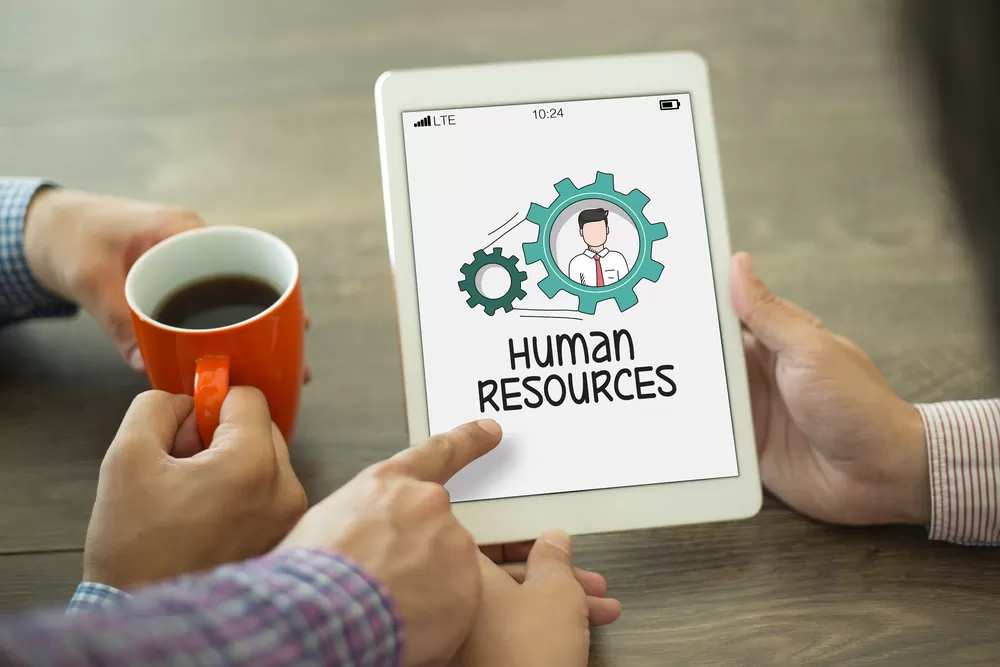Data integrity is critical in every aspect of business, especially as it pertains to human resources. If HR data is inaccurate or inconsistent, it can affect employees’ paychecks, employee performance reviews, training and development, productivity tracking, the reputation of the company, the bottom line and productivity itself.
What Is Data Integrity?
Data integrity’s definition is the accuracy and consistency of data. If you are converting a manual system to an automated one during HRIS implementation, or altogether switching to a new system, it is easy for data integrity to be compromised. One number in the wrong place or incorrect formula can jeopardize the integrity of numerous pieces of information. It’s important to take the necessary steps to maintain data integrity throughout the implementation process. Simple data mistakes can have a dramatic impact on the workplace.
Why Is Data Integrity Important?
Inaccurate data is of no use to a company. On top of that, data loss or exposure can be a major threat to operational security or to employees. Therefore, data integrity is a continual process. Maintaining data accuracy helps ensure:
- Stability
- Performance
- Recoverability
- Traceability
- Searchability
- Connectivity
Companies that don’t have accurate data can end up making poor decisions based on that data. Marketing teams and hiring managers can make poor decisions as a result. Data that isn’t accurate or consistent can also lead to poor sales. In addition, employees across the entire company may end up wasting time on the wrong opportunities. Plus, HR can end up wasting a lot of time double-checking data, redoing payroll, and correcting mistakes if data isn’t accurate from the beginning.
Data Integrity vs. Data Security
Maintaining data integrity involves keeping data accurate and consistent. By contrast, data security is protecting data from unauthorized access. Having good data security is a good way to help preserve data integrity. A data breach or a cyberattack can result in the leak of data to unauthorized sources but it can also compromise the integrity of the data or even destroy it.
Both data integrity and data security are essential to the company’s success. However, data integrity refers only to the accuracy and consistency of the data. Data security, on the other hand, is protecting that data. Data integrity is one of the goals of data security, however. Data security efforts are designed to protect data not just from leaks but also from attacks that would threaten its integrity.
What Are Threats to Data Integrity?
There are several ways the integrity of your data can be compromised. These threats can include:
- Human error
- Accidental
- Intentional
- Transfer errors from one device or system to another
- Bugs
- Malware
- Viruses
- Cyberattacks
- Hacking
- Hardware failures
- Hard drive crash
Some of these can be prevented with good data security. However, others cannot. This means that data integrity processes should also include redundancy, including duplication of data and backups, as well as validation and data security.
Data Integrity Challenges that Can Be Overcome with HRIS
“Big data” is a buzzword that gets tossed around a lot and is being increasingly used to speak of human resources data in addition to company finances and systems. Big data and associated navigation techniques can sound complicated and intimidating to small companies that have limited resources and fewer employees, but following the models of larger companies can manage to glean valuable insights from this data. Acquiring an affordable HRIS and using it to navigate data can help small companies to strategically use their information.
HR Data Compilation
Collecting, storing, and tracking data is a challenge that every organization must face, no matter the size. In the past, most companies collected data from employees using paper forms, stored the data in filing cabinets and folders, and tracked the data using rudimentary forms or spreadsheets, if the data was tracked at all. Unfortunately, many small companies still use this ineffectual and error-prone system.
By implementing even a basic HRIS, small companies enhance their ability to meet compliance requirements for reporting this data and make the information much easier to collect, store, and find. Depending on the features offered with the HRIS, employees may be able to electronically enter their own information as well, saving managers time from having to key data into systems.
Data Analysis
With the old filing cabinets, or even the updated electronic filing cabinets, information is difficult to find and practically impossible to use for decision making. HR data may be strewn across spreadsheets, files, and stored in boxes. When data is stored in an HRIS, organization and tracking systems are already in place within the system, so data can simply be entered and recalled for useful means as needed.
Performance Analysis
Analyzing HR data can take an expert if it must be done manually. Formulas to break down labor numbers and percentages, compare labor numbers to productivity measures, and track issues like absence and turnover can be complex and applying them can be time consuming. HRIS solutions make it possible to analyze real-time data and apply formulas automatically or in seconds, producing reports that can be used to make decisions to improve operations continuously.
How to Use a HRIS Strategically
Even the smallest companies can use HR data strategically. After analyses have been done, action can be taken to improve operations in both the short term and the long term. When manual systems are used, data can still be analyzed and used strategically, but the processes may take longer and be less relevant by the time solutions are found.
HRIS Software, Big Data, and the Big Picture
It shouldn’t be a surprise to any HR professional that HR data can be enormously beneficial to companies seeking to improve their workforce. HRIS software is a vital tool in the collection of that data. However, the big data movement is in its infancy, and not all companies that have made the move toward collecting HR data have reached the point where data collection and analysis have resulted in significant benefits, such as:
- Enhanced ability to recruit top performers.
- Improvement in retention of valuable employees.
- Accurate assessment of which employees will make good leaders.
- Development of more effective training.
But jumping into big data is more than getting, well, a mountain of data. Here are some critical questions to keep in mind as you are planning your data collection and analysis.
Who Is Going to Analyze the Data?
Chances are that your HR staff is not loaded with analytics experts. However, certificates and degrees in analytics are available to bring your staff up to speed. You can hire experienced data analysts to assist in the effort, on a full-time or consultant basis. HR leadership must have the ability to envision what big data can do for the organization and to understand what the analysis shows.
What Is Your Toolset?
All HRIS software packages are not created equal. Take advantage of the talent you identified in Step 1 to help select the software that will meet the needs of your organization, and to determine how to use that software to full advantage. Depending on the type and size of your business, certain HRIS software options will emerge as front runners.
What Problems Are You Trying to Solve?
Before collecting data, some analysis needs to take place to ensure that the data being collected serves a business purpose. Your data collection should be targeted toward answering your biggest questions. If you identify multiple issues, prioritize those problems and your data collection needs.
What Data Do You Need?
This step naturally follows problem identification. It also makes much more sense to ask this question before acquiring more data than you know what to do with and then trying to figure out what data has value.
What Data Corresponds to Identified Issues?
This should be an easy step if you have already matched your data collection to your needs. If not, you can still peruse your collected data to see what applies to specific problems.
What Is Our Plan of Action?
We are all used to making decisions based on our gut feelings or on conventional wisdom. It takes a certain amount of courage and creativity to make and implement a plan based on new data, especially if that data tells us something we didn’t expect. Just remember, big data, big rewards.
What Does the Post-Implementation Data Tell Us?
After you’ve implemented your plan, it’s time to collect more data and draw some conclusions about the success of your plan and how it was applied. It might be time to tweak your efforts or to proceed to the next problem you want to resolve using big data.
How to Properly Maintain a HRIS
A common mistake that many companies make with HRIS is failing to consider ongoing HRIS maintenance after implementation. Many companies simply assume that the human resources department will take care of HRIS maintenance, without allocating any additional time or staff to the department to help with this (sometimes monumental) task.
Failing to properly plan for HRIS maintenance can have disastrous consequences such as information leaks or losses, so it is important to make sure a plan is in order before implementation is even complete. Understanding when to perform maintenance, what maintenance is necessary, and who should perform tasks can help to keep the HRIS running smoothly.
Establish Good Vendor Rapport
It may seem like it should be a last resort, but it may be very helpful to establish good vendor relations and set up a support system through the vendor as a first step. The vendor support personnel are the experts when it comes to your new software; they have likely dealt with any issues that you may encounter.
You should try to work out the bugs in your new system before contacting vendor support. Nevertheless, it’s in your best interest to establish a good relationship with support personnel before you need their help.
Run Trials Before Entering Real Data
Before converting all your information to the new HRIS, try entering a few pieces of information and performing the various functions available in the system on the information. If the reports process properly and everything looks good, move forward. However, if anything is incorrect, communicate with the vendor or your own in-house experts to figure out what is wrong, before beginning the full implementation process.
Select Professionals to Enter Data
It may be tempting to assign newer employees or those ranked at lower levels to perform the mundane tasks associated with data entry. However, HR professionals should really be the ones completing this step.
HR professionals will be less likely to make critical errors, as they understand the information being entered and are familiar with how the data is used. HR professionals will also be more apt to maintain tight security of sensitive employee information than lower-level employees.
Parallel Test the New System
When converting from a legacy system or manual system to a high-tech HRIS, it is helpful to run both systems simultaneously while everyone acclimates to the new system. Parallel testing in this way will help to identify errors that may have been caused by unfamiliarity with the new system. In fact, these errors may have been difficult to spot if the old system had been scrapped immediately.
If there are any inconsistencies in the data produced by the two systems, chances are high that those discrepancies are caused by formula or data entering errors with the new system. Thankfully, the old system will be able to help spot those errors with ease.
Spot-Check Results Frequently
After the new HRIS has been fully implemented, parallel testing has gone smoothly, and the system seems to be running without a hitch, it is still important to spot check the results and the generated reports.
While the new system is operating just as expected, it is still possible that unfamiliarity will cause mistakes to be made for a time. Spot checking reports frequently after the implementation of a new HRIS will help ensure that your data integrity is maintained.
Monthly Maintenance Needs
At least once a month, maintenance should be done on HRIS systems to fix bugs in coding and configuration and to apply vendor maintenance upgrades. These corrections and upgrades may be done by an in-house HRIS specialist or by the vendor, depending on the HRIS contract and the organizational structure. As changes are made to the system, employees and managers may need to be trained to adapt to the changes, so training costs and additional staffing needs should be factored in for this as well.
Quarterly Maintenance Needs
About once every three months the system’s security access should be reviewed and fine-tuned by either in-house or third-party professionals. Reviews should be conducted by managers to make sure that the system is still meeting objectives and changes should be made if needed. About three months after HRIS implementation, subsequent installation phases should be put into action if necessary, but these needs should not have to be repeated.
Biannual Maintenance Needs
At least once every six months, obsolete reports, functions, and features should be purged from the system to keep information and dashboards well organized and running smoothly. New vendor products should be reviewed for possible upgrades to keep up with technology trends. These functions should be completed by an employee that is very tech-savvy and familiar with both the system in use and the organizational needs.
Annual Maintenance Needs
At least once a year, the system should be reviewed to make sure that all relevant compliance needs are being taken care of. As new legislation is put into effect, these needs may change, so periodic maintenance may be required in addition to annual maintenance. Terminated employee records should also be purged once every year.
Maintenance After Several Years
Every two to three years, companies should expect to do a full overhaul of their system. A third party should be brought in to evaluate the effectiveness of the system and provide tips for upgrades and improvements. Based on the results of the third-party evaluation and an in-house evaluation done by key employees, HRIS software should be upgraded or altered to meet the newly defined needs.
Attend Vendor Conferences and Meetings
Vendors often hold meetings and conferences, but the frequency of these may vary. For best results, companies should attend these meetings and conferences whenever they are held. Meetings are often held quarterly, conferences annually, and these can be extremely informative and can help maintain HRIS solutions to higher standards than would be possible otherwise.
HRIS makes it possible for HR professionals at smaller companies to provide managers and employers with data-driven insights and advice regarding operational costs, challenges, and improvements that can help the company to survive and grow. Obtaining an HRIS may take creative budgeting, but it can quickly pay for itself by helping the company to avoid compliance penalties and by improving operations within the company. HR data is just as valuable to small companies as it is to large companies when it is used properly.
If you are looking to find a great HR software vendor that will provide plenty of support throughout implementation, we can help. Visit our software match page so that we can get started on finding the vendor that’s right for you.












